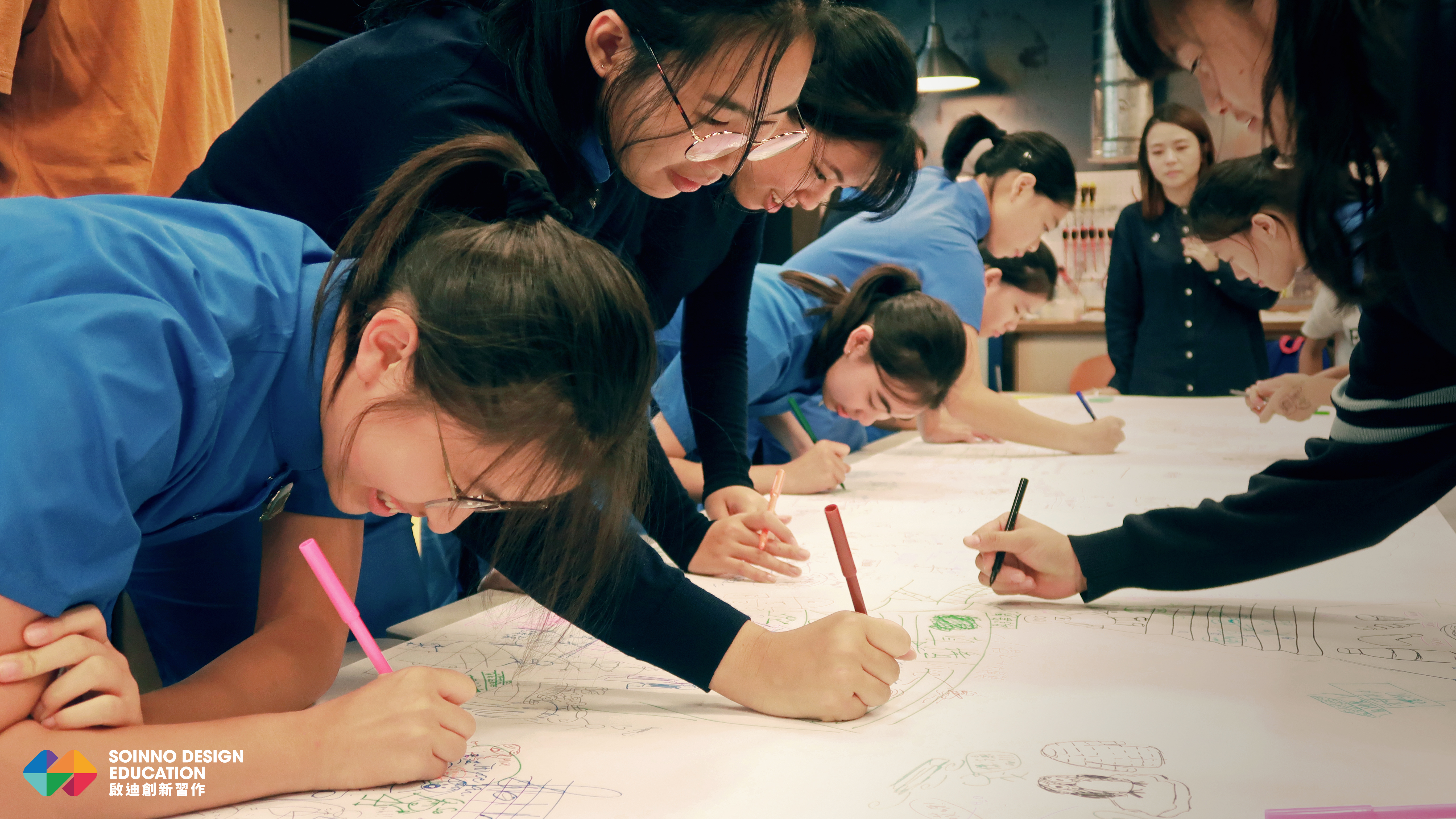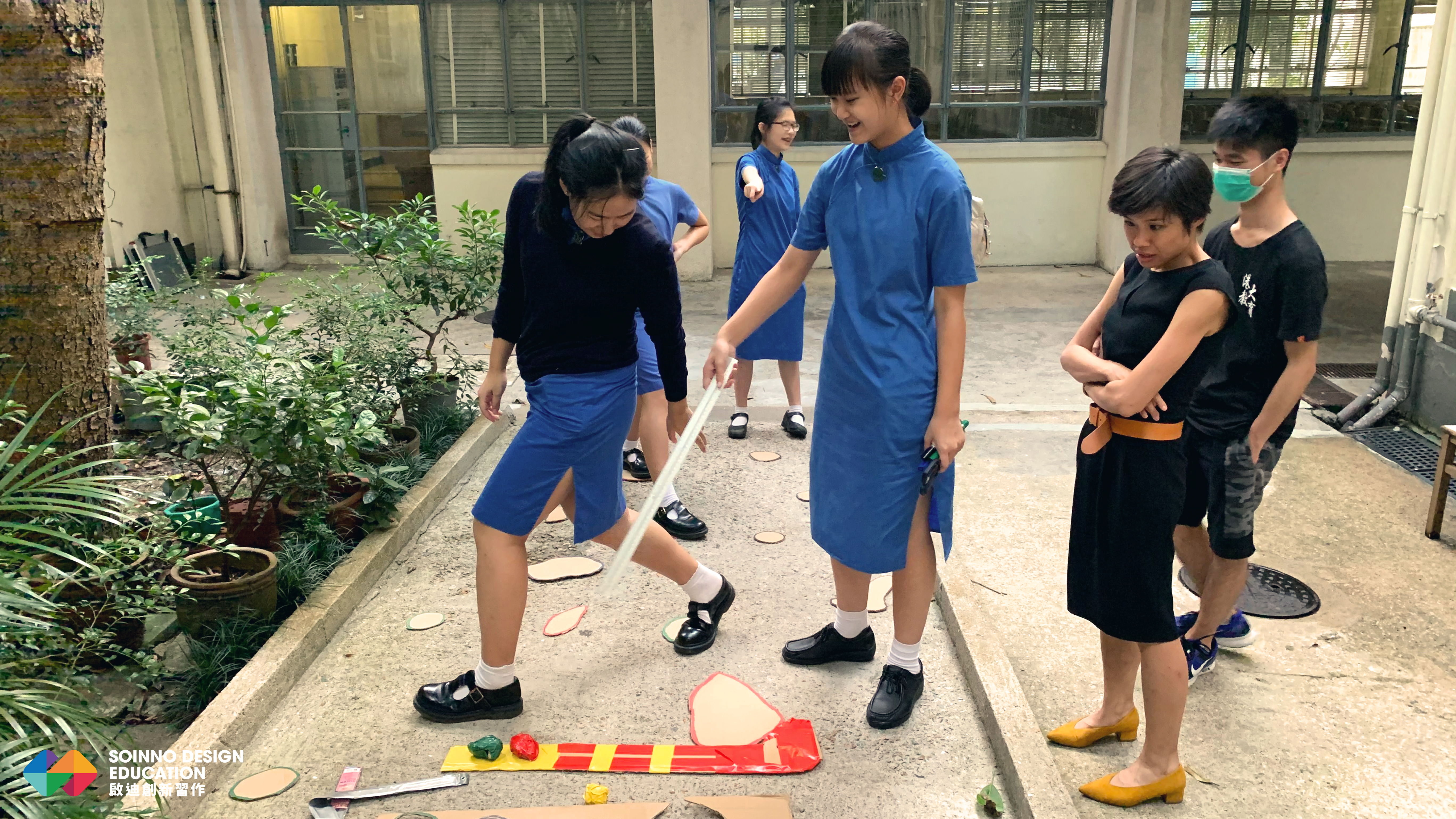Author: Kay Chan (Product Designer)

When I was invited to be the facilitator of a design thinking workshop for secondary students, and knowing that its teaching method would be different from that I had been doing, I couldn’t help wondering what the teaching tools would be. In the past, without receiving clear instructions on teaching, I could only select relatively effective approaches based on my own experience. In this workshop, the organiser provided very well-prepared teaching tools as well as many useful materials and methods, which helpfully supplemented my teaching.
Participants of my workshop were Form 4 and 5 students from Heep Yunn School. The workshop engaged them to explore the use of idle spaces on campus through design thinking and in doing so brought to them a new experience. It was both a training for the students and a challenge for myself. The concept of “Design Playing” was introduced throughout the workshop. Adopting a playful teaching approach—a style that I have never tried before—I designed a curriculum with tools and games such as “Design a Game”, “Idea Battle Card”, “Force Combination”, etc. It was clear that classes in the form of games are more relevant to daily life and conducive to students’ development of ideas based on their own experiences and application of design thinking. Another benefit is that a more relaxing learning atmosphere can be created, which helps make discussion processes and outcomes more interesting.
|
|
I was particularly impressed by the unexpected answers given by the students when I tested them at the end of the workshop with the question “Do you remember the process of design thinking?” One group said that they did because they practised design thinking in the exercise of “Design a Game”. It can be seen that the teaching tools worked well in helping students quickly understand the concept of design thinking and fostering their creativity. The students’ works may not be perfect, and the students may not have the chance to make full use of the facilities of “Do Ground”. However, in the process of making the life-size models, they understood that the completeness and feasibility of their ideas as well as proportion of the models are more important than the materials. Ideas can be realised with even simple materials like cardboard.
Hong Kong’s education system has been criticised for putting too much emphasis on academic performance and being too goal-oriented while ignoring the importance of independent thinking. The aim of design thinking courses is not to nurture brilliant ideas, but to facilitate the process of learning and application of subject knowledge, as well as through executing “learning through playing” and “learning through making”, to allow students to give full rein to their creativity and imagination. Learning can be achieved through many different approaches.


